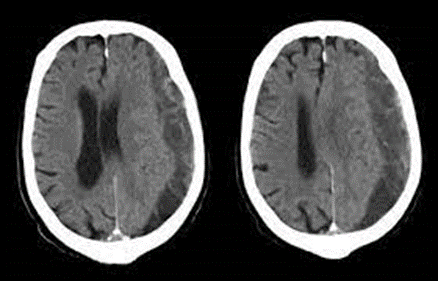A nurse is caring for a client who was admitted with type 2 diabetes mellitus. Which of the following findings indicates hyperglycemia?
Absence of Chvostek's sign
Presence of Kussmaul respirations
Presence of diaphoresis
Absence of urinary ketones
The Correct Answer is B
Choice A Reason:
Absence of Chvostek's sign is a wrong indication. Chvostek's sign is a twitching of facial muscles in response to tapping the facial nerve and is typically associated with low blood calcium levels (hypocalcemia). It's not directly related to hyperglycemia or high blood sugar levels. Hyperglycemia refers to high blood sugar levels, commonly associated with diabetes mellitus.
Choice B Reason:
Presence of Kussmaul respirations is a right indication. Kussmaul respirations are deep, rapid, and labored breathing patterns often seen in individuals with diabetic ketoacidosis (DKA), a severe complication of diabetes characterized by significantly high blood sugar levels and the presence of ketones in the blood and urine. This type of breathing pattern is the body's attempt to compensate for the acidic state caused by high blood sugar and the buildup of ketones.
Choice C Reason:
Presence of diaphoresis is a wrong indication. Diaphoresis refers to excessive sweating, which can occur due to various reasons such as physical activity, heat, stress, or certain medical conditions. While hyperglycemia can cause symptoms like increased thirst and frequent urination, diaphoresis alone is not a specific indicator of high blood sugar levels.
Choice D Reason:
Absence of urinary ketones is a wrong indication. The presence of urinary ketones indicates the body is breaking down fat for energy, which commonly occurs during periods of insufficient insulin (such as in hyperglycemia or diabetic ketoacidosis). However, the absence of urinary ketones doesn't necessarily rule out hyperglycemia. It's possible for hyperglycemia to be present without ketones in the urine, especially in the early stages or when the body is still managing blood sugar levels without significant ketone production.
Nursing Test Bank
Naxlex Comprehensive Predictor Exams
Related Questions
Correct Answer is A
Explanation
Choice A Reason:
The client has a delayed response to verbal commands. This finding can indicate increased intracranial pressure. Changes in responsiveness, such as delayed responses to verbal commands or other stimuli, can be indicative of neurological impairment due to elevated pressure within the skull.
Choice B Reason:
The client has ecchymosis around the eyes. Ecchymosis around the eyes (raccoon eyes) can occur with certain head injuries, but it's not a direct sign of increased intracranial pressure. It's more commonly associated with basilar skull fractures rather than specifically reflecting increased pressure within the skull.
Choice C Reason:
The client is unable to remember details of the motor-vehicle crash. Memory impairment or amnesia regarding the event can occur due to head trauma, but it might not directly correlate with an increase in intracranial pressure. It's more related to the effects of the injury on memory function.
Choice D Reason:
The client reports ringing in the ears. Tinnitus or ringing in the ears might occur in some cases of head trauma but is not a direct indicator of increased intracranial pressure. It might result from the impact of the injury or other associated factors.

Correct Answer is ["A"]
Explanation
a. Have the client wear a surgical mask during transport. This is the appropriate intervention to prevent the spread of the influenza virus when the client needs to be transported within the healthcare facility. Influenza is primarily spread through respiratory droplets, so wearing a surgical mask helps to contain these droplets.
b. Wear an N95 mask while providing care to the client. An N95 mask is generally not required for influenza. Standard precautions, including wearing a surgical mask when within close proximity to the client, are usually sufficient.
c. Administer an influenza immunization to the client. It is not appropriate to administer the influenza vaccine to a client who is already infected with the influenza virus.
d. Place the client in a negative airflow room. Negative airflow rooms are typically reserved for airborne diseases such as tuberculosis. Influenza, which spreads via droplets, does not require this level of isolation.
Whether you are a student looking to ace your exams or a practicing nurse seeking to enhance your expertise , our nursing education contents will empower you with the confidence and competence to make a difference in the lives of patients and become a respected leader in the healthcare field.
Visit Naxlex, invest in your future and unlock endless possibilities with our unparalleled nursing education contents today
Report Wrong Answer on the Current Question
Do you disagree with the answer? If yes, what is your expected answer? Explain.
Kindly be descriptive with the issue you are facing.
